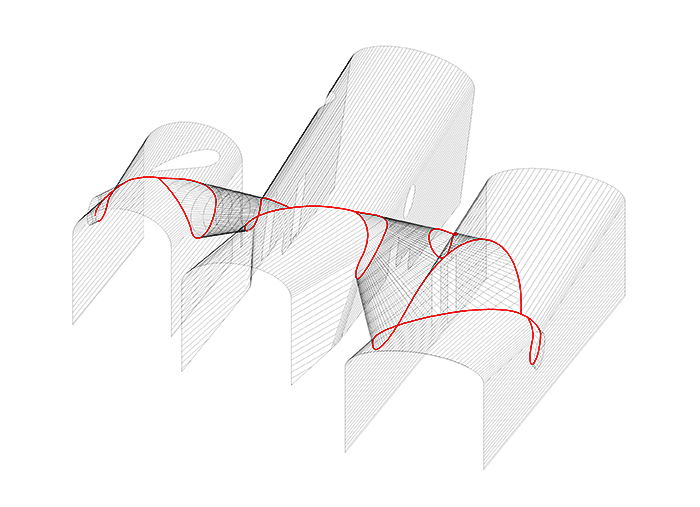Day 2 - Projective Space
From Euclid's Optics, to Brunelleschi's drawings of Palazzo Vecchio and Alfred Whitehead's Process and Reality, the development of Projective Space marks a long history of fundamental concepts in the documentation and manifestation of reality. The introduction of 'Points of View' and 'Points at Infinity' become powerful tools for Art, Science and Philosophy, in their attempt to both capture our physical world and to project fictional and generative models onto reality. Projective Space is still today, encoded in our VR and Machine Vision algorithms. As a case study in Projective Space, we trace the conical intersections present in the massing volumes of the Wu House by Preston Scott Cohen. We expand on our projective toolset to include Reality Capture and the photogrammetric description of an object. In the representation tutorial we look into perspective projections, transformations and camera motions.
![]()
From Euclid's Optics, to Brunelleschi's drawings of Palazzo Vecchio and Alfred Whitehead's Process and Reality, the development of Projective Space marks a long history of fundamental concepts in the documentation and manifestation of reality. The introduction of 'Points of View' and 'Points at Infinity' become powerful tools for Art, Science and Philosophy, in their attempt to both capture our physical world and to project fictional and generative models onto reality. Projective Space is still today, encoded in our VR and Machine Vision algorithms. As a case study in Projective Space, we trace the conical intersections present in the massing volumes of the Wu House by Preston Scott Cohen. We expand on our projective toolset to include Reality Capture and the photogrammetric description of an object. In the representation tutorial we look into perspective projections, transformations and camera motions.


